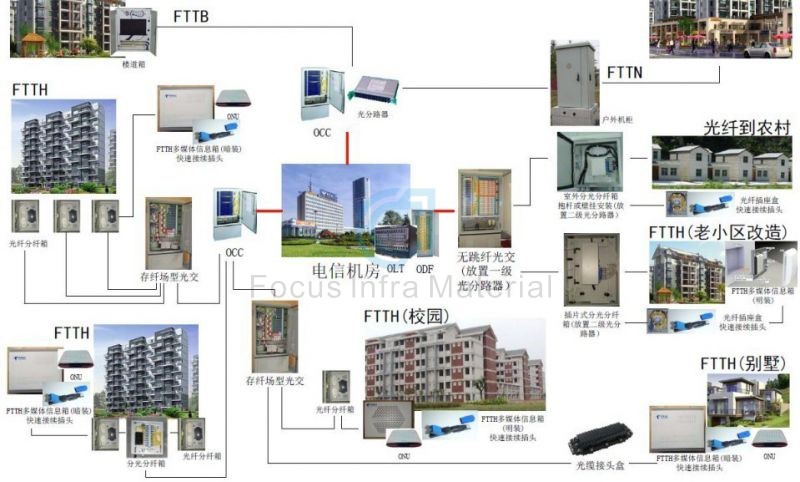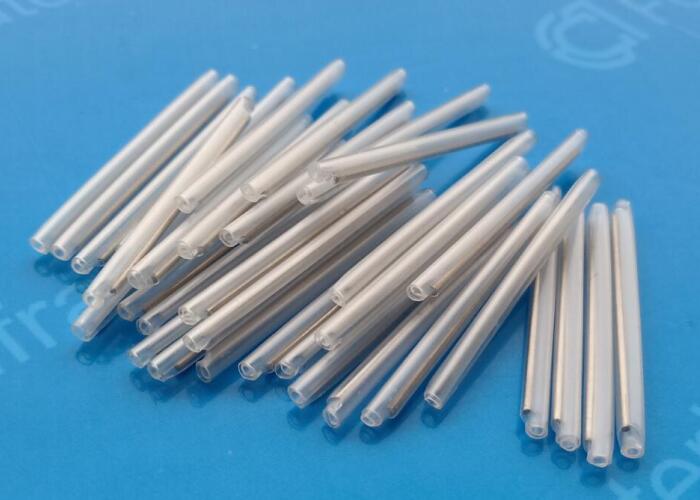What is FTTH?
Fiber-to-the-home (FTTH), sometimes also called fiber-to-the-Premises (FTTP), is a broadband Internet connection technology that uses optical fiber to deliver high-speed broadband Internet directly to individual buildings such as homes, apartment buildings, and businesses. Unlike traditional twisted pair or coaxial cable networks, fiber optic cables made from thin strands of glass or plastic fibers can transmit data over long distances using optical signals, which are less susceptible to interference and signal loss than copper wires. These features ensure faster and more efficient data transmission compared to traditional broadband networks, making FTTH ideal for providing Internet access to residential and business customers in urban, suburban and rural areas.
Advantages of FTTH
First, it is a passive network. From the central office to the user, the middle can basically be passive;
Second, its bandwidth is relatively wide, and the long distance is just in line with the large-scale use of operators;
Third, because it is a service carried on optical fiber, there is no problem;
Fourth, because its bandwidth is relatively wide, the protocols it supports are relatively flexible;
Fifth, with the development of technology, relatively complete functions have been developed including point-to-point, 1.25G and FTTH methods.
In the optical access family, there are FTTB (Fiber To The Building), FTTC (Fiber To The Curb), fiber to the roadside, FTTSA (Fiber To The Service Area), and so on.
FTTB (Fiber To The Building): means fiber to the building. It is a broadband access method based on optimized high-speed fiber optic LAN technology. It uses
fiber to the building and network cable to the home to achieve user broadband access. We call it FTTB +LAN's broadband access network (FTTB for short) is
the most reasonable, practical, cost-effective broadband access method. FTTB broadband access uses single-mode optical fiber high-speed network to achieve
Gigabit to communities, 100M LAN to buildings, and 10M to users. Since FTTB is completely like a local area network in the Internet, dialing is not required to
use FTTB, and FTTB has a dedicated line to access the Internet. Users only need to turn on the computer to access the INTERNET. Of course, FTTB access to the
ISP will not be busy like ordinary dial-up Internet access. FTTB access to the Internet can only be fast or slow, and will not cause access to be busy. And because
accessing the Internet through FTTB does not access the INTERNET through the telephone switching network, It only occupies broadband network resources and
does not incur phone charges when browsing the Internet with FTTB.
FTTB has the same hardware requirements as ordinary LAN: computer and 10M Ethernet card, so the hardware investment for users is very small. FTTB high-speed
dedicated line Internet users can not only enjoy all Internet services, including querying information, seeking help, email communications, e-commerce, and stock
and securities operations through the Internet, but can also enjoy many broadband value-added services provided by ISPs, distance education, telemedicine, and
interactive services. Video (VOD, NVOD), interactive games, broadcast videos, etc. Compared with HFC, FTTB can fully guarantee the bandwidth of each user,
because the final 10M bandwidth of each user is exclusive.
The advantages of FTTB as a high-speed Internet access method are obvious, but we should also see the disadvantages. ISPs must invest a lot of money to lay
high-speed networks to each user's home, which greatly limits the promotion and application of FTTB. To truly let FTTB A lot of work still needs to be done before
most Internet users can afford it.
(1) FTTN: Fiber To The Node, fiber to the node
(2) FTTZ: Fiber To The Zone, fiber to the community
(3) FTTCab: Fiber To The Cabinet, fiber to the junction box
(4) FTTC: Fiber To The Curb, fiber to the curb
(5) FTTB: Fiber To The Building, fiber to the building
(6) FTTP: Fiber To The Premise, fiber to the user premises
(7) FTTH: Fiber To The Home, fiber to the home
(8) FTTO: Fiber To The Office, fiber to the office
In different application environments, the optical cables used also have structural differences to cope with the special needs of different environments.

CATEGORIES
LATEST NEWS
CONTACT US
Contact: Yuki
Phone: +8618981876882
E-mail: yuki.hecy@cdfocusinfra.com
Whatsapp:+8618981876882
Add: No. 1760 century avenue, Chongzhou city, Sichuan province, China

